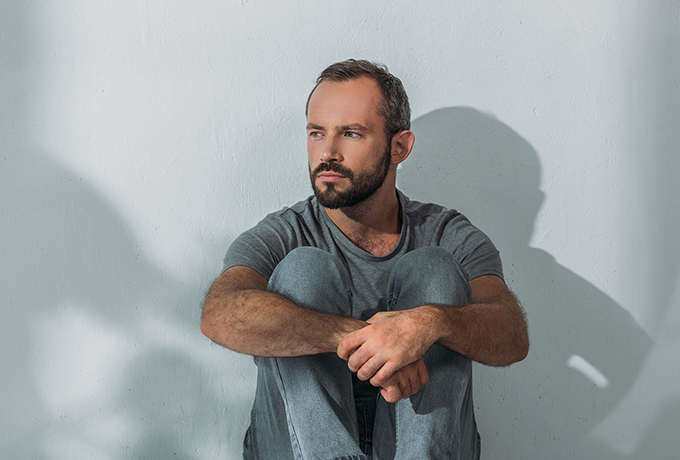While attention and support for mental health and suicide prevention continue to grow, there is still a stigma surrounding suicide. The stigma can intensify feelings of shame, isolation, and rejection and stop someone from seeking help.
Key points
- Stigma around suicide can be due to a lack of understanding of the complexity of suicide.
- Stigma can be based on negative beliefs or attitudes.
- Stigma can lead to a person feeling embarrassed, misunderstood and marginalised.[1]
What is the stigma around suicide?
Stigma is when a person is viewed negatively or is discredited and, as a result, is treated differently.
According to the suicide prevention organisation StandBy, the stigma attached to suicide is often rooted in misplaced associations of weakness, blame, shame, and even sin or crime. Stigma can colour perceptions, thoughts and actions and is often reflected in our language and behaviour.[2]
There are different types of stigma, including:
- Public or personal stigma – this is when the general public or a person has negative views and attitudes about other people. These are often based on negative stereotypes, misunderstandings, and misinformation. People may apply common labels to the person who ended their life; for example, “they’re selfish” or “they took the easy way out.”
- Self-stigma – this is when a person has negative attitudes or beliefs about their own situation. This is sometimes called internalised stigma, as the person may have internalised the public stigma. For example, they may think, “I should just be able to bounce back and snap out of this.”
Stigma around suicide: How does it affect people?
The unfortunate impact of stigma around suicide is people not seeking help when they need it. Those who have lived experience of suicidal distress and suicide may internalise their feelings of shame because of this perception of how their peers and society view them. If a person has experienced stigma in the past, they may be reluctant to reach out for help again.[3] And stigma around suicide can also prevent others from offering support.
Stigma around suicide can have the following effects on a person who is experiencing it:
- Lowers hope and increases distress
- Worsens mental health and wellbeing
- Increases feelings of self-doubt, shame and embarrassment
- Negatively impacts self-esteem
- Reduces the likelihood of seeking support or treatment
- Increases difficulties in personal and working relationships due to a lack of understanding
- Increases social isolation.
Stigma also affects those bereaved by suicide. Research suggests that those bereaved by suicide experience negative attitudes from others and social awkwardness.[4] People bereaved may feel rejection, shame and blame. Misinformed reactions to suicide can result in avoidance and uncertainty about how to approach someone about their grief and loss. Many people bereaved by suicide find themselves avoiding the disclosure of the cause of death due to the anticipated stigmatised responses.
So, what can we do to break down the suicide stigma?
- Recognise the signs when someone needs help. It’s not always possible to know when someone needs help, but there are suicide warning signs that you can look out for. Try to move past any discomfort you may feel about how to help. Act on those thoughts and concerns, as your help could make all the difference. If you’re worried about someone you know, call us anytime on Suicide Call Back Service 1300 659 467. If there is an immediate risk, please call 000.
- Raise your voice. People with lived experience shouldn’t be expected to carry this weight alone. Tackling the stigma and busting the myths around suicide is a part we can all play.
- Examine your thought processes and understanding. Are they right? Could you be more sensitive and non-judgmental?
- Your words matter. Use safe and inclusive language to avoid alienating anyone. For example, instead of using “committed suicide”, you can say, “took their own life” or “died by suicide”. Mindframe has a short language guide with more examples.
- Use your social networks to discuss suicide prevention openly, share content on social media, and spread the word.
If you need to talk to a counsellor, call Suicide Call Back Service 1300 659 467 or click on the online chat button. Our professional counsellors are available 24/7 and our service if free.
If it is an emergency, call 000.
References
[1] SANE Australia National Stigma Report Card https://nationalstigmareportcard.com.au/national-stigma-report-card/faq
[2] StandBy Support, Managing social stigma after suicide https://standbysupport.com.au/wp-content/uploads/2021/07/8.-Managing-social-stigma-after-suicide-support-pack.pdf
[3] National Suicide Prevention Adviser Final Advice https://www.mentalhealthcommission.gov.au/national-suicide-prevention-office/national-suicide-prevention-adviser-final-advice
[4] Pitman AL, Stevenson F, Osborn DPJ, King MB. The stigma associated with bereavement by suicide and other sudden deaths: A qualitative interview study. Soc Sci Med. 2018 Feb;198:121-129. doi: 10.1016/j.socscimed.2017.12.035. Epub 2018 Jan 2. PMID: 29316512; PMCID: PMC5884304.









